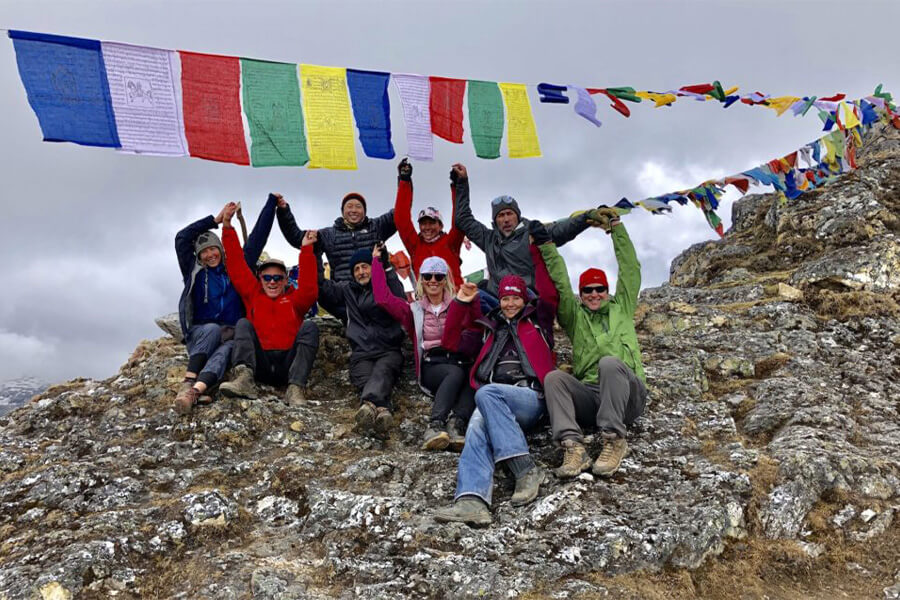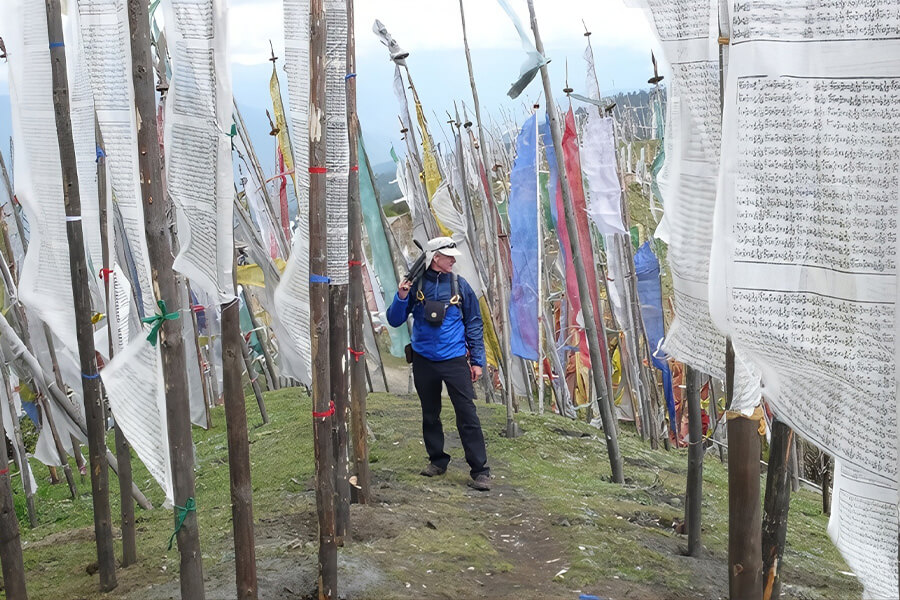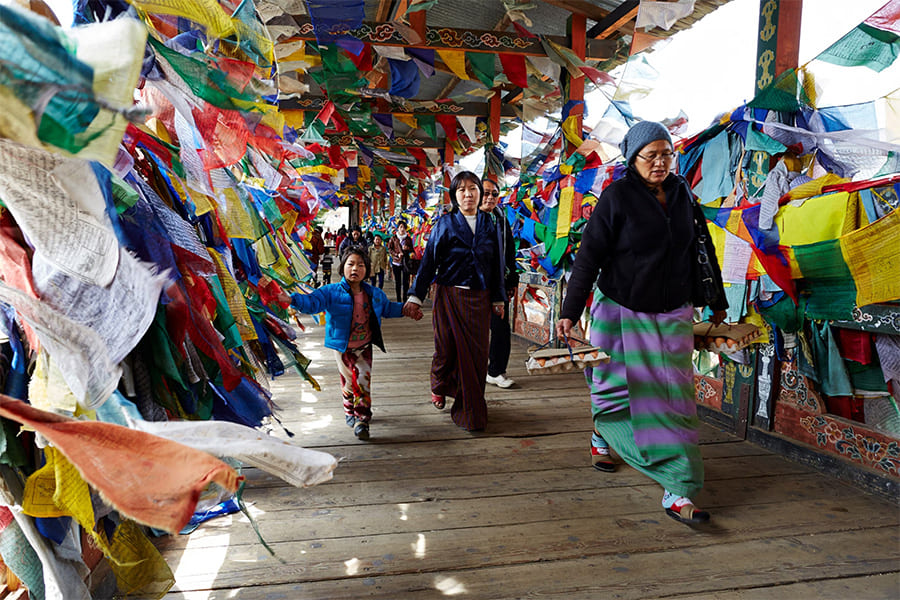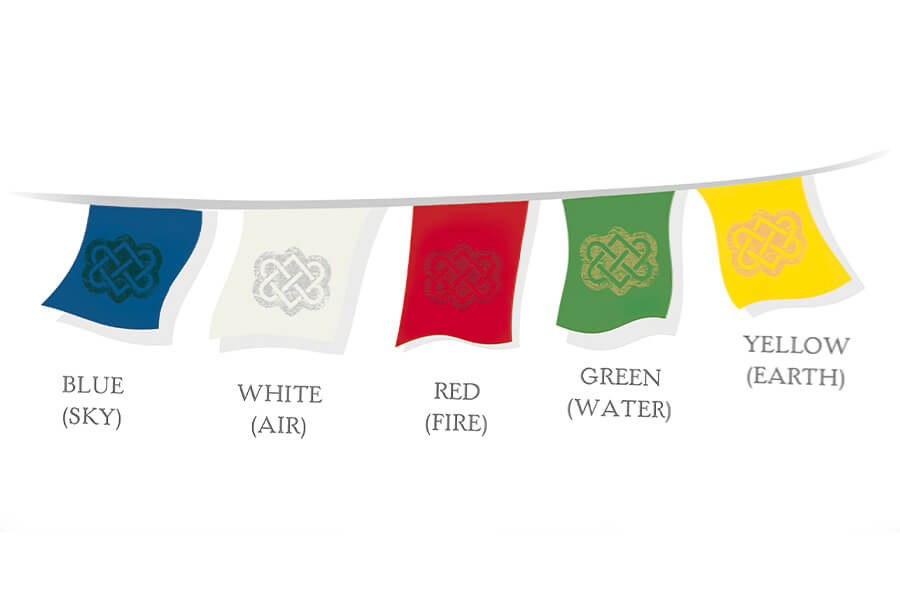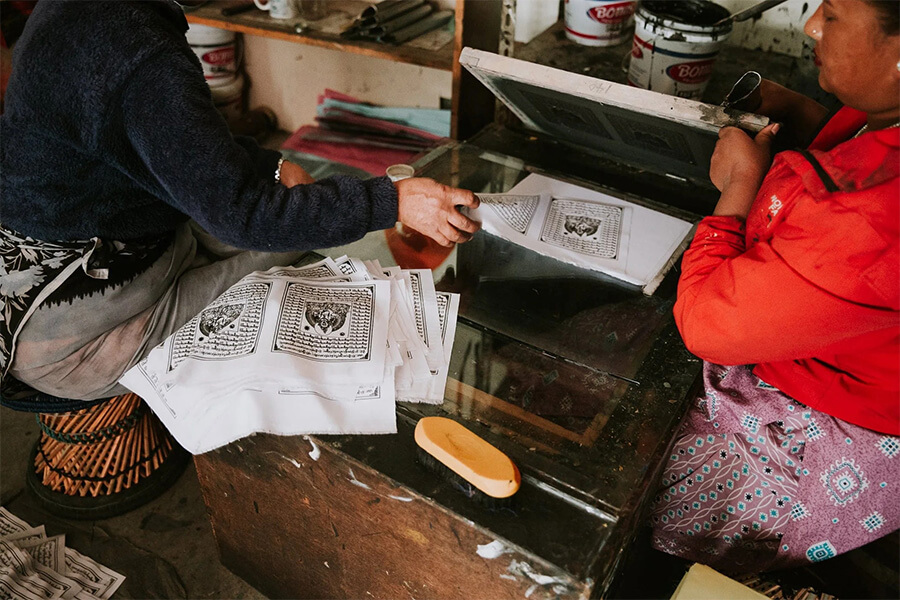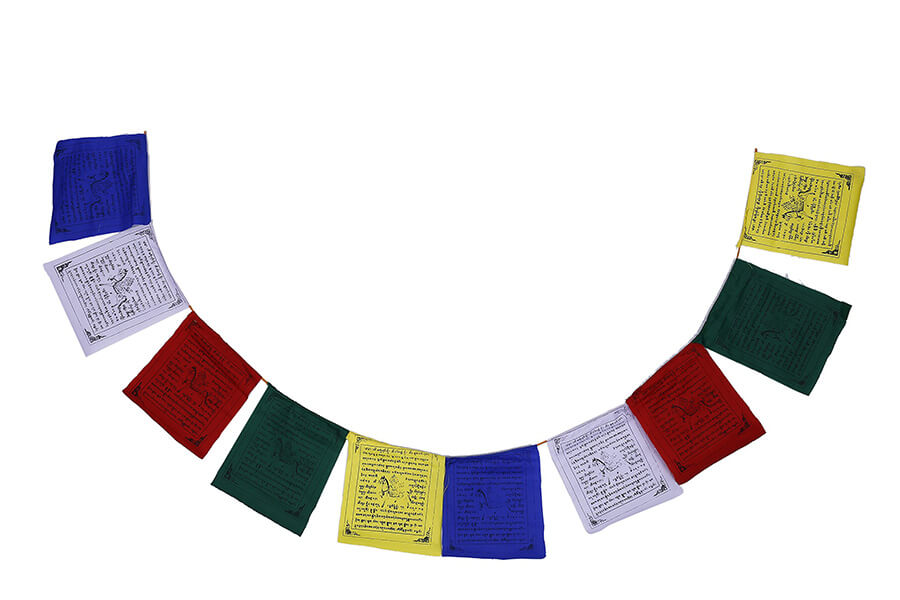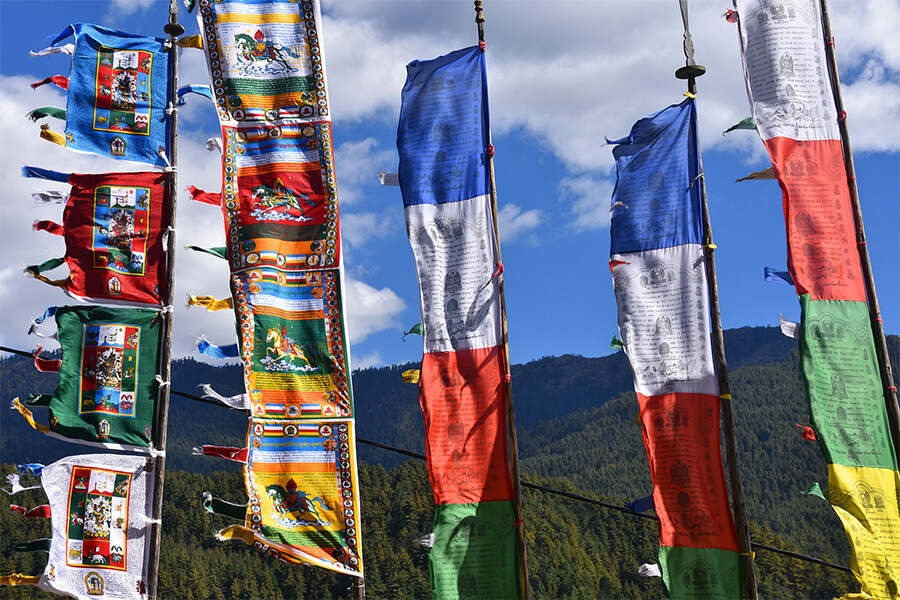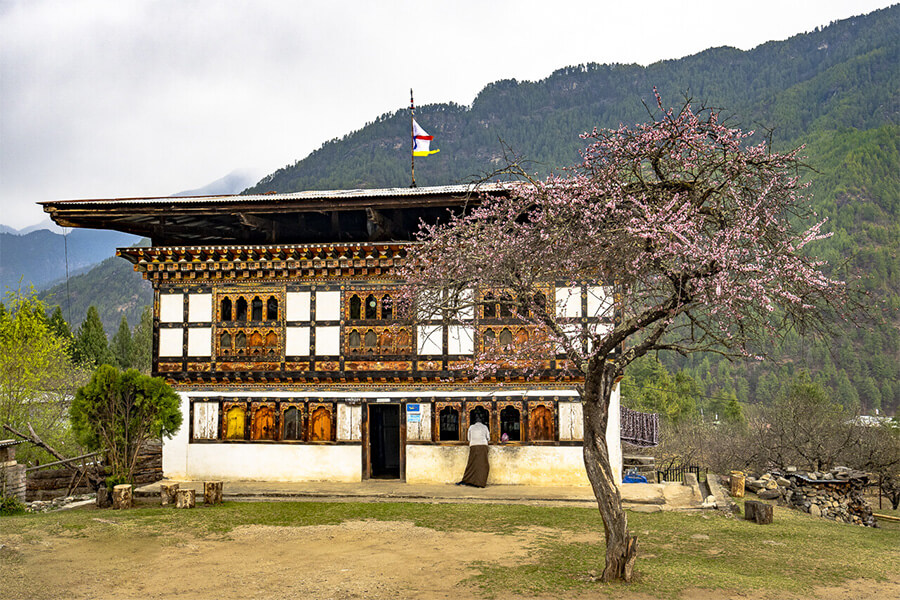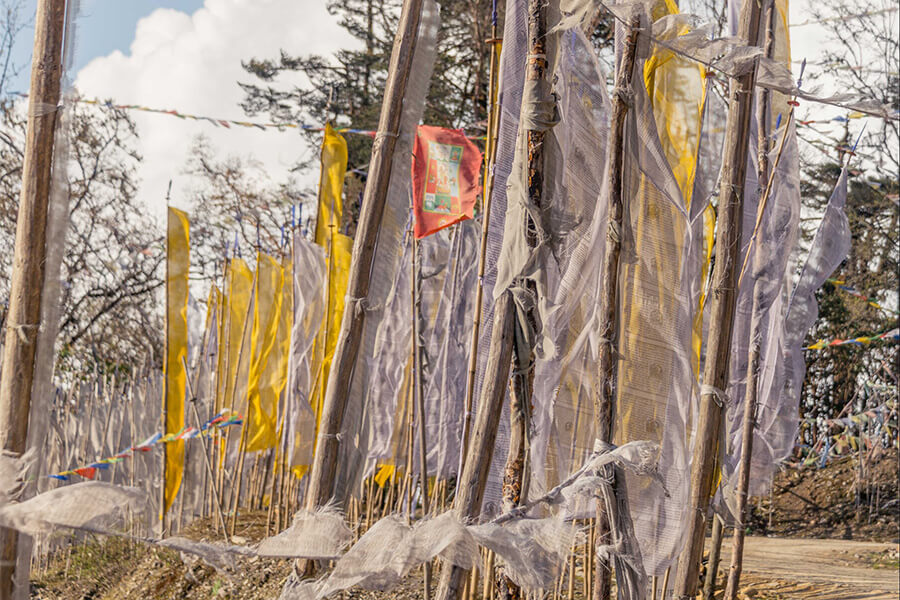Bhutan, the enchanting Himalayan kingdom, is a land where spirituality blends seamlessly with nature. Among its many sacred traditions, the colorful prayer flags in Bhutan stand out as one of the most iconic symbols of peace, compassion, and good fortune. These fluttering flags, often seen on mountain passes, monasteries, and village paths, carry prayers and mantras that are believed to be spread by the wind to benefit all living beings. For travelers joining tours to Bhutan, witnessing these vibrant Buddhist prayer flags dancing against the dramatic backdrop of the Himalayas offers a deeply moving glimpse into the country’s spiritual heart. Each flag tells a story - of faith, harmony, and Bhutan’s unwavering devotion to Buddhism and nature.
What Are Bhutanese Prayer Flags?
The Bhutanese prayer flags are pieces of cloth inscribed with mantras, deities, and auspicious symbols. Rooted in Vajrayana Buddhism, which is the dominant spiritual tradition of Bhutan, these flags are believed to promote peace, wisdom, and prosperity to all beings. Much like a Bhutanese prayer wheel, which spreads blessings when spun, these flags harness the power of the wind to carry prayers across the land.
Each flag carries prayers written in ancient Tibetan script, often featuring the “Om Mani Padme Hum” mantra, associated with Avalokiteshvara, the Buddha of Compassion. When the wind blows, it activates the mantras, carrying blessings across the land.
You will find Prayer Flags Bhutan in every corner of the country - from the iconic Tiger’s Nest Monastery in Paro to remote mountain passes like Chele La and Dochula. The sight of thousands of fluttering flags against the backdrop of snow-capped peaks perfectly captures the spiritual essence of Bhutan.
What Is the Significance of Prayer Flags in Bhutan?
For Bhutanese people, the prayer flags in Bhutan symbolize the spreading of goodwill and compassion. Each movement of the flag by the wind releases positive energy and blessings, not only for the person who hoisted it but for all beings everywhere.
Bhutanese believe that by hanging prayer flags in high and windy locations, prayers and good wishes will be carried far and wide. This simple act represents a powerful Buddhist teaching - that all beings are interconnected, and one person’s virtue can benefit the entire universe.
The Buddhist prayer flags are also a reminder of impermanence, one of the core teachings of Buddhism. As the flags fade and fray over time, they mirror the transient nature of life. When the old flags are replaced by new ones, it symbolizes renewal, the cycle of life, and the continuation of good deeds.
What Are the Colours of Prayer Flags Bhutan and Their Meanings?
The beauty of Prayer Flags Bhutan lies in their five radiant colors - blue, white, red, green, and yellow - each representing one of the five elements and the harmony between them.
- Blue symbolizes the sky and space, representing purity and healing.
- White stands for air and wind, symbolizing balance and peace.
- Red represents fire, signifying energy and transformation.
- Green corresponds to water, symbolizing growth and harmony.
- Yellow represents earth, denoting stability and grounding.
These colors are always arranged in a specific order, from left to right - blue, white, red, green, and yellow. This sequence is sacred, reflecting the balance of the universe.
What Is the Cultural Belief Behind Prayer Flags in Bhutan?
In Bhutan, hanging prayer flags is both a spiritual practice and a cultural ritual passed down through generations. It is common for Bhutanese families to hoist new flags during special occasions such as births, marriages, and religious festivals.
One of the most emotional customs is the hoisting of prayer flags in memory of the deceased. In these moments, hundreds of tall white flags are raised on bamboo poles to help the soul of the departed find peace and a favorable rebirth. These flags are known as Lung Dhar or Death Flags, and the act of hanging them is considered one of the most meritorious deeds in Bhutan Buddhism.
The Bhutanese people believe that the prayers carried by the wind benefit all beings, not just humans. Therefore, hanging a prayer flag is not an act of personal gain but of compassion - a way to share blessings with the world.
How Are Bhutanese Prayer Flags Made?
The process of creating Bhutanese prayer flags is as spiritual as their purpose. Traditionally, the making of flags is done by monks or skilled artisans who understand the sacred meanings of the symbols and mantras. The prayer flags in Bhutan are made with mindfulness, ensuring purity of intention in every step.
Once printed, the flags are often blessed in monasteries before being hung in auspicious places - hilltops, bridges, or near temples - where the wind can spread their prayers freely.
What Materials Are Used to Make Prayer Flags in Bhutan?
Traditionally, Tibetan prayer flags and their Bhutanese counterparts are made from cotton or silk. Nowadays, many are also made from polyester to endure Bhutan’s harsh mountain weather.
The sacred texts and symbols are hand-printed or woodblock-printed using natural dyes. Common motifs include:
- Wind Horse (Lungta) - symbolizing good fortune and the carrying of prayers on the wind.
- Mantras - such as “Om Mani Padme Hum,” invoking compassion.
- Deities and auspicious symbols - representing protection and blessings.
Each flag is more than a piece of fabric - it is a spiritual medium linking the physical and metaphysical worlds.
What Are the Different Types of Prayer Flags Found in Bhutan?
Lungdhar (Horizontal Prayer Flags)
The most common type, Lungta means “Wind Horse.” These rectangular flags are strung horizontally along ropes, seen on bridges, rooftops, or between trees and mountain ridges. They represent good fortune, victory, and the spreading of Bhutan prayer flags through the air.
Dachog (Vertical Prayer Flags)
Tall vertical flags mounted on poles, often planted near homes, monasteries, and mountain passes. These are believed to promote prosperity and protect against misfortune.
Goendhar (Ceremonial Flags)
Raised during special rituals, such as consecrations or religious festivals. They carry powerful mantras and are usually larger and more elaborately decorated.
Manidhar Flags
Smaller flags used during local religious ceremonies or personal meditation practices. These may contain prayers dedicated to specific deities or family blessings.
Each type of flag represents a unique form of prayer, contributing to the spiritual landscape that defines Bhutan.
Frequently Asked Questions about Tibetan Prayer Flags
1. Are Bhutanese and Tibetan prayer flags the same?
While they share origins in Himalayan Buddhism, prayer flags in Bhutan and Bhutanese ones have subtle differences. Bhutanese prayer flags are more deeply integrated into the country’s daily life and rituals, often used in both personal and community ceremonies.
2. Where can I see prayer flags in Bhutan?
You can find them almost everywhere — from high passes like Dochula and Chele La to the courtyards of monasteries such as Punakha Dzong and Paro Taktsang. Many hiking trails are lined with colorful flags, adding to Bhutan’s spiritual charm.
3. Can tourists hang prayer flags in Bhutan?
Yes, visitors can respectfully participate in the tradition. Many tour operators or guides can arrange for travelers to hang their own flags during treks or temple visits. However, it’s important to follow local customs — always ask permission, ensure flags are properly blessed, and avoid placing them in inappropriate locations.
4. Do the flags have to be replaced?
Yes. Over time, prayer flags fade and disintegrate naturally. Bhutanese people replace them periodically to renew prayers and keep the energy flowing. Old flags are respectfully burned or buried, symbolizing the cycle of life and rebirth.
5. Is there a right time to hang prayer flags?
According to Bhutanese astrology, auspicious dates are chosen based on the lunar calendar. Locals often consult monks to select a day when planetary alignments favor positive energy.
6. What is the spiritual meaning of the wind horse?
The “Lungta” or Wind Horse symbolizes the power of the wind to carry prayers and blessings across the world. It represents the balance of inner strength and spiritual energy - a central concept in Bhutanese Buddhism.

